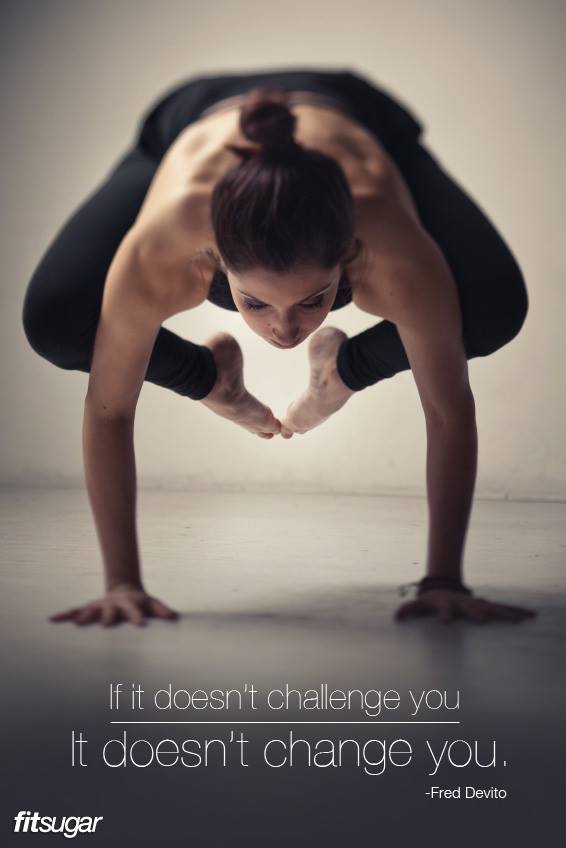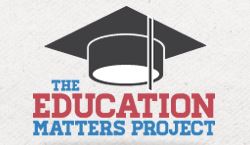Leadership
Pulling a Hat out of a Rabit
 In most cases, people try to pull a rabbit out of the hat.  That’s a problem that is very difficult to solve, and has the allure of being magical.  On the other hand, have you ever heard of anyone try to pull a hat out of a rabbit.
In most cases, people try to pull a rabbit out of the hat.  That’s a problem that is very difficult to solve, and has the allure of being magical.  On the other hand, have you ever heard of anyone try to pull a hat out of a rabbit.
Sounds impossible I know. Â I haven’t tried doing it either.
But maybe sometimes, it’s worth working on a problem that hasn’t been solved before. Â Sure it’s risky, but the reward is also exponentially bigger if it actually works.
The safest thing you can do is pick a path that everyone would choose But maybe greatness starts, by choosing a path that is the scariest.  Changing up the problem.  Turning the reality backwards.  Trying something that nobody else would.
Just a thought.
Grace during transitions
Tr ansitions are hard. Â And often times feel awkward.
ansitions are hard. Â And often times feel awkward.
Between meetings at work, where one meeting ends at 10AM and the next one begins at 10AM and you find yourself rushing from one meeting to the next, without any time to prepare.
When a project at work fails. Â And you have to tell your boss what happened before starting on the next one.
When you lose your job and you have to find a new one, with limited time and money on your hands.
And in yoga, when it’s halfway through class, and the tough postures are starting.  The instructor calls out one tough pose, then another, then another.  Meanwhile, you’re exhausted and can’t imagine being graceful for one more second.
In life, we often get wrapped up in these endpoints.  We want to get deeper into poses, do well on our presentations, ace our interviews, move on to the next project, or get funding four our company.  And we tend to focus so much on the endpoints that we forget the importance of the process.  Of what we can learn from our experiences.  What we can take with us.  And how gracefully we can move between the endpoints.
Sure, periods of transition always carry with them a fear of the unknown.  But they also provide opportunity.  To do something you’ve never done before.  To find comfort trying something you’ve never tried before.  To learn.  To find balance and composure.  To fail gracefully and refocus your compass and radar to get closer to the right path.
Every big innovation that’s ever existed at some point hadn’t been done before.  Almost every best-seller came after 5 books that never made it big.  And almost every great yoga instructor spent time playing with awkward transitions.  But the people who found success failed often, focused more on the process than the outcome and learned to have grace when transitioning.
So it would seem to me grace during difficult and awkward transitions is one very important step to success.
Just a thought.
Practice everyday. Shun the non-believers
 Since starting the 100 Day Challenge, I’ve run into skeptical people, including just a few days ago which prompted this post. People skeptical about the idea of 100 days.
Since starting the 100 Day Challenge, I’ve run into skeptical people, including just a few days ago which prompted this post. People skeptical about the idea of 100 days.
Isn’t CrossFit a better workout? Why do you like that Teacher X? Why would you do yoga for 100 days straight?
As though I only do yoga for the physical workout. And little did they know that Teacher X happens to be one of my favorites (and a Yogi 1oo participant).
At first thought, I almost became a little defensive forgetting that patience has been one important lesson I’ve continued to learn my practice. But since starting, it’s become more obvious than ever that a regular practice is critical.
Every time I get on my mat, the results of how I treated my body the previous day are right there for me to witness. I get immediate feedback on how hard I practiced last week, how much food I ate the night before, and how present I am at the onset of class. The more I practice these things, the easier the asanas are, the stronger I get, the more I start to see change right in front of me, and the less surprised I am when I flow into poses that once seemed impossible. (Just yesterday I floated into two new awesome handstand poses! … and forearm stands have never been easier)
In short, the repetition and commitment to the practice makes you feel better, become stronger and shine brighter.
Shun the non-believers.
Generosity matters more than ever
 Ironically, during times of change and moments turmoil most people usually do just the opposite. Think about it.
Ironically, during times of change and moments turmoil most people usually do just the opposite. Think about it.
When the economy went south a few years ago, the first thing to do is think of yourself first. How do you get a job out of grad school? How will you pay back your loans? When you have a bad day at work, many people take it out on the people they run into, or close themselves off until they get home.
But it turns out that now more than ever we are rewarded for being generous. Generous not just with your money, but with your time, your ideas, your talent and the products you create.
Taking time to respond to someone who needs your help.  Talking to them about your job, your industry or your school. Taking time to ask questions rather than talk about yourself. To not just listen but hear their story and show empathy. Taking time to help someone open a door, or let someone pass you in line when they are in a hurry.
It turns out that when you do these things naturally (not for a reward) people will gravitate to you. And they’ll do it quickly.
In today’s internet driven world, this is even easier, since we are more “connected” to people, but as a result more “disconnected” than ever. Giving someone the gift of your time and attention will help you stand out, help create a real connection, make people feel more human and give you the potential to make more change than ever.
So why not give it a try?  Invite someone to an event you’re hosting as a special guest. Share information on a new project you’re working on that might delight them. Create a community of people in your town to come together and find change. Listen to more people’s stories. Hold the door open for someone.
It doesn’t always matter what you do, but sometimes the smallest things sometimes make the biggest difference. So start small. Today is a perfect day for small acts of generosity
Just a thought.
Secret office
 I just got back from a trip to Costa Rica. The trip was extraordinary. Not only because the country is beautiful and the weather was warm but also because I thought more about my secret office.
I just got back from a trip to Costa Rica. The trip was extraordinary. Not only because the country is beautiful and the weather was warm but also because I thought more about my secret office.
The office isn’t Costa Rica, and it’s also not the beach.  But instead it’s getting out of the office. Stepping away from emails. Being out in the country. Being away from the hustle and bustle and instead being at the beach and the mountains.
In those places, it’s like having my own office. More time to think and write. Spending time  with the best company. Having the best views and the best time to think. And of course having time to meditate and do more yoga.
Instead of writing emails to clients, I wrote blog posts, scribbled in my journal, and took photos. I caught up with friends and did yoga in the sunlight.  And in the end I felt renewed and had more ideas than ever.  I even started the blog for Yoga 100 (and now have a lot more participants) and managed to come back to happier … all while having an experience I won’t forget.
In short, we are often very productive at work and at home. But sometimes, it’s good to change things up and find your secret office. Sometimes you can get more done than ever, all in just a few hours, and spend the rest of the time enjoying the trip.
Just a thought.
(This is a view from my office in Costa Rica)
100 Days of yoga blog is live and ready to share
 How can we be more connected to ourselves and those around us? How can we find change not just in our bodies but also in our minds?
How can we be more connected to ourselves and those around us? How can we find change not just in our bodies but also in our minds?
I hear people talk about these questions all the time. And often times, I like to bring up the topics in my small group sessions I do.  Often times, I’ll share my experiences with them and one of them is from my recent time of doing 100 days of yoga.
Over the past few weeks I’ve shared the experience. And the response has been better than expected. Â So we’ve created a project for people to do the same thing in 2014, Â to complete 100 days of yoga and meditation and find change for themselves.
We have a blog. Â It’s totally free to read and share.
It took a lot to get here. A lot of yoga, Â a lot of making time, and a lot of conversations about it. Â So I encourage you to take a few minutes to check it out after we get started on 2/1. Â And perhaps consider joining.
http://yogi100.wordpress.com/blog/
What if I’m afraid I can’t do it?
 Then you’d be in extraordinary company. Many people I know have been afraid. And most people who dare to do big things feel the same way.
Then you’d be in extraordinary company. Many people I know have been afraid. And most people who dare to do big things feel the same way.
To that end, a better question might be, “how will I respond after I am afraid? Will I respond with courage or fear?”
One of the best ways to find change is to do things we haven’t done before, things that are scray, and things that might not work. If you do, you will be one step closer to not just succeeding but to succeeding in a really big way.  Coming up with a new idea for the next big startup, the next blog post that moves people, or the next movement in your community. More importantly, you will be wiser and stronger no matter what the outcome is.
Many people in the world shy away from things they are afraid of. On the other hand, people who get courage and go after the things they are initially afraid are the ones who find change.
A few people have mentioned that they are nervous they can’t finish a 100 day yoga challenge. You’ll never know if you don’t try. Please consider joining on 2/1/14.
The problem with the edge
 I recently wrote  a post about the finding the edge. How finding it is one of the most important things you can do. That’s because it’s at the edges where you grow, and where change really happens. But the problem with the edge is that a lot of people never find it.
I recently wrote  a post about the finding the edge. How finding it is one of the most important things you can do. That’s because it’s at the edges where you grow, and where change really happens. But the problem with the edge is that a lot of people never find it.
The first problem with the edge is that most people are afraid of it. Afraid to be too edgy, or afraid they might go too far. That they might be ridiculed or worse yet, that they might fall and feel too much pain. But the good news is you can always get up and try again. So the challenge is to go anywys. To take emotional risks, reach out to people who may say no and to try things that might not work but if it did work could change everything. Because that’s where the big reward is.
Another problem is that edges are different for everyone. This means there’s no rulebook or step-by-step guide, you just have to do it. Feel your way through. Figure out the hard part of whatever is you’re working on and do that first.
The last problem is that the edges change over time. Like your favorite Chicago Bears sweater you used to wear all the time but that got stretched out and now is way too big.   Or ideas that seemed creative three years ago, like crowdfunding and Instagram, but now are more common than ever. Like those examples, your edge changes over time and gets redefined, so you have to keep pushing.
Edges are scary and sometimes might feel impossible to find. But that doesn’t mean you shouldn’t look for them. Because in the end, the edges are where real change happens.
So have you started looking yet? What are you waiting for?
How I just completed 100 straight days of yoga
 Just two weeks ago, I completed 100 days straight of yoga. In addition to meeting a lot of great people at the studios and feeling better than ever physically, I also had the chance to see first-hand how much change can come from doing anything, but especially yoga, for 100 days in a row.
Just two weeks ago, I completed 100 days straight of yoga. In addition to meeting a lot of great people at the studios and feeling better than ever physically, I also had the chance to see first-hand how much change can come from doing anything, but especially yoga, for 100 days in a row.
I remember when I decided to go to my first class like it was yesterday.
It was just after lunch on a Tuesday afternoon in August. I was taking a break outside of my office, and I get a text from my one of my really good friends, Ruby, asking if I wanted to try out her new yoga studio, Core Power Yoga. I had enjoyed doing yoga a few years before, so I said “Sureâ€. Work was busy that week, so I didn’t go that day or the next. But after a few texts and reminders throughout the week, I finally “caved in†and agreed to go to a class Sunday night.
We went to a C2 class, which at the studio is a Power Yoga/Vinyasa class. Â Ironically it turns out, that the class/instructor became one of my favorites months later, and her Sunday evening class is a staple in my routine today.
“What a remarkable class†I thought to myself after the class. I felt more energized and excited about the class than any of my other workouts at the gym.  So I figured I’d make good use of my free week and go every day to maximize the experience. My friend Ruby came as well, and eventually one class turned into one week, which turned into a trial membership, which turned into finishing the 30 Classes in 40 Days Challenge (except I did it in 24 days), which eventually turned into 100 days.
The first reaction people usually have is “WOW!” and “What kind of yoga?†Students, athletes, friends and yoga instructors alike have pretty much had the same reaction and found it pretty cool. Except one of my instructors who immediately told me she did 108 … and here I was hoping to impress her.
100 days was not the initial goal. In fact, I did not start with a goal at all. It was initially just making use of my free week, and then hitting the 30 classes in 24 days so I could have a chance to win a free gift from the studio. But the change I felt, even in the first few weeks led to a lot more than that.
It’s extraordinary to know what change can come from doing anything (but especially yoga) consistently – the progress, patience, connection and persistence – but the change that comes after one hundred days is profound.
Upon reflection, here are a few of the lessons I learned from the experience:
Making Time
At the onset, my first thought was “things are pretty busyâ€, hopefully I can fit a few classes in. After all, I am an M&A lawyer at a large law firm in Chicago. But after a week or two, things changed. I started planning my schedule around going to the studio. I went at 6am on many days as well after 8pm on many days (after getting to work before 7am). In the beginning it was a little bit of a juggling act and I had to make lots of adjustments to make my schedule work. But eventually, it became a habit and was easier, more seamless, and more exciting than on day one.
More than creating a habit, it also helped to build in the ability to schedule things when you’re busy, to prioritize what you care about and find time even when you don’t have time. Studies are very clear that some of the most successful people in the planet (world class CEOs, entrepreneurs and politicians) do that They get up at 5am and find time to do things like exercising before most of the world is awake.
The Process of Progress
When I first decided to practice yoga daily, I knew I’d improve physically, but the physical benefits were far more immense than I first thought. The aha moments really kicked in right around the three weeks in, when I started realizing I could do things that were totally new. Getting better inch by inch. Holidng poses longer. Sliding into poses I never imagined. And conquering the fear that comes from poses that look impossible.  It’s like a coder who finally gets learns HTML, then Java, then coding platforms like JoomLa, and then gets her new URL to go live. Or the applicant who finally gets a few more questions correct, and then a few more, while studying for the GMAT, and after scoring a 620, 650, 670 and 690, finally hits a 740 on the exam. In the end, you keep record of what you’ve achieved and start to appreciate small but important amounts of success.
But more important than any physical progress was the mental benefits that came with the physical ones. The fact that little things didn’t seem to get to me as much. That I had more mental energy and focus throughout the day. That things were more clear and I was more decisive and calm. Seeing the progression of these benefits has been extraordinary.
Persistence
The process of being persistent has also been a really big benefit. Like studying for the GMAT/LSAT, preparing for the bar exam or doing anything new but difficult. These things all take persistence to get through. The ability to push yourself to new levels constantly. And just when you reach the goal you’ve set, you have to do it again on another topic. But mixing in the physical element makes everything even more complex. During the process many things happen: you learn to become OK with where you are, you keep record of your improvements, and start making smaller incremental goals of what you want to achieve. Meanwhile, pretenses about how good you are go away. You learn how to be OK with where you are, even if it’s not where you want to be. Or even if it’s not as good as you were yesterday. You stop comparing yourself to other people around you. And in the end, you become far more aware of where you want to go and what it will take to get there than ever before. These feelings help you to continue persisting not just through a class but also throughout the month and for the entire 100 days.
Finding your edge (See my blog post on this)
In yoga one of the most important parts of practice is finding your edge. That means understanding just how far to go into a pose. Because if you don’t go far enough, then you won’t be challenged, you won’t get the full stretch, and as a result you won’t get the open heart, mind or body that you want. On the other hand if you go too far, that increases not just the pain but also the possibility of injury. And it’s more likely than not that you won’t make it through the full class. Somewhere between these two points is the perfect balance: your “edge.†One of my favorite instructors, Yasemin, talked about this in two classes, and I thought the idea was spot on.
Embracing the Pain (See my blog post on this)
In yoga another important part of practice is the ability to embrace the pain. In yoga, you feel the pain in the class, especially when you’re new or challenge yourself to go further. But by the end you feel more flexible and stronger, and at the end of class, feel like you can do anything. In sports, the same thing is true. Through the pain that comes with training you get better. And if you embrace it, you’ll get faster, jump higher and perform better when the game starts. In life, pain helps you learn to endure failure, learn how to make better choices, and learn how to stand up and fight back the next time around. In the end, yoga, like anything else, takes work to do well. But 100 days later, the work becomes more fun and the benefits are outsized if you can embrace the pain along the way.
Change
More than anything, the last 100 days is about change. Changing how you prioritize your activities. Understanding that you can change your body and your mindset with persistence and focus. Changing what you believe, and understanding that what seems impossible at first doesn’t have to be.
With that said, I’ve decided that I’ll be doing it again in the next few weeks. Maybe 108 days this time to match my instructor.
Anyone interested in joining?
New beginnings
 People all over the world crave new beginnings. But ironically, most people also do everything they can to avoid them.
People all over the world crave new beginnings. But ironically, most people also do everything they can to avoid them.
The lawyer who slaves away at her job for an extra few years because she likes her salary and doesn’t know what to do next. The middle manager who is comfortable with the day to day routine which he thinks he can’t find anywhere else. Or the aspiring journalist who chooses to stay at a big company instead of working in the small town in Iowa for the chance to finally make it on air. This is because new beginnings are hard and uncertain.
But new beginnings are also the best opportunity you have to change everything. They give you a sense of hope and rebirth. They remind you that more in the world is possible if we just look up. And they remind you how good you are the moment you break out of your routine.
That’s why we celebrate them on new years and new birthdays.  It’s why we get excited to start over in school again, or start a new job after school. It’s what makes entrepreneurs excited to wake up each and every day.
The ability to do something for the first time. To chance to tackle the problem that everyone else said would not work.
Every day in yoga, we approach our practice the same way: with a beginner’s mind. We start every class in “childs pose†and we take our first breath and put our feet down on the mat for the first time. You don’t know how class will go. And sometimes you feel sore, tired, and nervous you might not finish. But every day, you take the first breath, concentrate and more often than not, you not only make it through the hard part, but you also make more progress than you ever imagined. That’s why so many people keep going back.
In short, new beginnings sometimes give you the opportunity to change everything.
Meeting my readers
 I don’t do it often as I want, but I really enjoy meeting my readers.
I don’t do it often as I want, but I really enjoy meeting my readers.
I’ve had the chance to meet many of them. In Chicago, Atlanta, Phoenix, New York and the Bay. But also in countries like Kenya.
Today, I had the chance to meet one of my favorite readers. We’ve been trying to meet up for a few weeks and it finally happened.
He just graduated college and had a lot of really great energy, not to mention questions about the world. He came prepared with a list of questions, but we didn’t get to most of them.
I think that meeting my readers remains one of the best ways to help hear more about the things students and professionals are thinking about and what their stories are. What they think about work, how they think about grad school and education, and what impact they want to make in their lifetime.
It also helps me hear about the things they fear. Â The fear of making sales calls, fear of getting rejected and fear of failing at what they do. Â And so I like to talk a lot about how to overcome that. Â We come up with plans so they can see a path to figuring out how to make it more likely that they will succeed.
But here’s the real secret. Â The hard is part isn’t defining the path or coming up with a plan, that’s the easy part. Unfortunately, it’s the part most consultants and advisors focus on. Â The hard part is doing the scary thing of taking a stand and sticking to the path. Â And so that’s where I like to focus. And it made for a really fun conversation today.
If any of you are interested in chatting, please let me know. I’d love to hear from you.
But before you  write, check out Education Matters Project. Most people I talk to tend to want to support the cause by sharing their story about why education matters to them.
Nothing is for everyone
 You know this but you ignore it every single time. Â And you always find out the hard way.
You know this but you ignore it every single time. Â And you always find out the hard way.
If you’re fundraising for Catholic Extension in Chicago, you have to ask yourself, why does it matter what the atheist next door thinks about your phone strategy?
If you’re a marketing executive at Target, why does it matter what loyal shoppers at Neiman Marcus think about your new products?
Or if you’re applying to college from the poorest schools in one of the poorest neighborhoods in the world, then why are you trying to please the admissions committees from colleges who don’t care about your story.
We all know this but we always seem to forget, that nothing is for everyone.
Think about it. The vast majority of people in the world have never sat in a Starbucks and never used an Android. Likewise the vast majority of people in many parts of Asia do not have indoor plumming.  The numbers show this very clearly.  Just because you have it, doesn’t mean everyone else does.  And the sooner we understand this, the more time we can spend focusing on ways to have more impact in the world by pleasing the people who do care.
In the end, you’re more likely to succeed if you say, this is what I stand for. And this is what I believe. If it’s not for you, then I’ll find the other people who believe in my story.
In short, ignore the skeptics. And spend more with the people that believe.
How dare the critics?
 How dare the critics criticize the work you created?
How dare the critics criticize the work you created?
So much of success is about doing things that are out of your comfort zone. Â About trying new projects, being creative and taking on more responsibility than ever before.
But the problem is that fear of the response from critics keeps us from doing it.  The smartest MBAs become afraid that they didn’t format the slides quite right. The sharpest law firm associates afraid they have typos in a memo.  And the smartest kids in class, nervous about getting a algebra problem wrong in front of everyone.  All enough to keep the from putting themselves on the line or speaking up when it matters. All because the critic might say, you are wrong, you made a mistake.
It’s the same concept society used to keep women in their place for decades. The same one that is used to tell the underclass that they don’t have a say. The same one that makes you feel like you don’t have the right to speak up at meetings. Or tell your boss when they’ve got something wrong.
So we hide instead of speaking up. We add qualifiers to our answers and put extra words in our work to distract everyone from what we really want to say.
And over time it becomes second nature. It’s far easier to add another 50 words. And another 50 words. And a few more lines to distort our message.  Rather than just stand up and say the 5 words that we believe.  And in the end, the critics have kept us from doing our best work.
The problem is that so much of success is about doing things that are out of your comfort zone and things that have never been done before.
We just have to find ignore the critics and move on. Hard, but worth getting better at.
How to build trust
 This is a question some people spend a lot of time thinking about.
This is a question some people spend a lot of time thinking about.
Yesterday a friend of mine said she finds trust from going out and having drinks with her friends. I understand what she was saying but I also think it missed the point.
In today’s age, it’s harder than ever to gain people’s trust.  And having a drink or two isn’t going to solve the trust problem.
As I’ve seen it, we don’t trust people just because of a few fun nights out in the city or because of an assignment we finished together. Instead, we trust them because they showed up for us.
We trust people because who showed up when it wasn’t convenient.  We trust people who helped us with an exam or project that we don’t think we would have passed without their support. We trust people who decided to tell us the truth even when they could have gotten away without saying anything. We trust people who don’t tell little white lies  even when they could have easily gotten away with it.  And we trust people who kept helping out on a project at work, even when everyone else already quit.
In today’s age it’s easier than ever to take the convenient route. And it’s harder than ever to find people you can really trust. When you find them, you should do everything you can to keep them.
Avoiding the small things that remind us of fear
 Every day, we make a thousand tiny little decisions. Â Decisions that we may not remember the next day but ones that we might regret if we did. Â Decisions that help us to avoid things that could be worthwhile, so that we can stay away from the emotion of fear.
Every day, we make a thousand tiny little decisions. Â Decisions that we may not remember the next day but ones that we might regret if we did. Â Decisions that help us to avoid things that could be worthwhile, so that we can stay away from the emotion of fear.
The problem is, when we put all these decisions off, we dramatically reduce the chances that we will be successful.
We don’t get started on that tough project at work because starting reminds us that we may need ask for help from someone we don’t want to ask.
We don’t have a discussion with a colleague, because we know it’s possible it could remind them of the project that didn’t go well.
We don’t study for that upcoming test because studying reminds us that there’s a really hard test coming up.
We avoid answering a person’s phone call because they remind us of an awkward discussion that we want to avoid.
In every case, the longer we wait, the worse off we are.
When I was young kid, my dad used to make me confront one of my fears, Â specifically regarding being shy (it’s true, as as kid, I actually used to be shy).
He would make me talk to people about things I didn’t know. He would force me to close out transactions with clerks at the grocery store and tellers at the bank.  He would have me talk to people on the street: bus drivers, volunteers, salesman, and homeless persons.  As a very shy kid this not only made me uncomfortable, but it helped me to get me out of my comfort zone.  At the time, I didn’t like how it felt.  Today, I see it’s one of the best things for me.
When we go about avoiding our fears, we spend so much time and energy avoiding things that we reduce our chances of things working out.
On the other hand, when we embrace these fears, talk about them and  dance with them, we not only improve our odds of success, but we also give ourselves the chance to make decisions that could change everything.
(Update)
Really great video that I recently found online
The simplest but most effective marketing strategy
 Do you want to know the simplest, but perhaps most effective marketing strategy?
Do you want to know the simplest, but perhaps most effective marketing strategy?
You probably have a lot of potential answers, but I only have one in mind.
You may not want to ask MBAs. MBAs will probably use analysis to give you a good answer. Â MBAs will tell you how to size the market. Â They may also tell you how to estimate your budget based on lots of numbers. But this usually doesn’t help with getting people to buy what you have.
It might also be risky to involve lawyers. They’ll tell you about all the risk and about all the potential litigation.But you don’t need that skill to be successful.
I propose that the best method to market is simply to care deeply.
I told you it was simple.
In short, care about WHAT you do and more importantly WHY you do it. Â Care about the customer. Care about being generous and giving the customer the best experience you can. Â And care about the story. Â You don’t need a degree to do that, though the experience of getting the degree probably helps you understand others better. Â But in many cases emotions, hard work, and a compelling mission will go a long way.
Just a thought.
Ignore the Skeptics
 “There’s no way you are going to be able to do this. It’s too hard to get that job.  You don’t have the right background. It’s impossible to make it work.
“There’s no way you are going to be able to do this. It’s too hard to get that job.  You don’t have the right background. It’s impossible to make it work.
We’ve all heard these words before. From skeptics and non-believers. People who don’t think we can do it. It makes many of us feel like we can’t. And like our work may not amount to anything.
But here’s the thing. Most skeptics don’t care enough to form a real opinion, and they don’t care if you succeed or not. They’re also often wrong.
The skeptics were wrong when they said that it was impossible take thousands of pounds of steels and fly it over the Atlantic. They were wrong when they said you couldn’t flip a switch and make an entire buliding light up. And they were wrong when they said that the Internet would never amount to anything. Time after time, skeptics have been proven wrong.
Don’t get me wrong, it’s tough to ignore the non-believers. The negative words get to you. You keep a mental list of the names of those who said it and the things they said. The ones who laughed at your business idea and questioned your choice to apply to a top school.
But what if the skeptics were wrong again?  What if you ignored them?  And what if, instead of thinking so much about what the skeptics say, what if you just ignored them and did it anyways. And what if it worked?
Just a thought.
From the Archives: Reflecting on the 2010-2011 School Year
 To all of those who recently graduated from college and grad schools over the past few weeks, congratulations! What a important accomplishment! I really do believe that Education Matters more than ever in today’s world, as the gap between those with and without a quality education is bigger than ever before. In the spirit of graduation season and embarking upon new careers,  I wanted to share one of my favorite posts, which comes from the archives.
To all of those who recently graduated from college and grad schools over the past few weeks, congratulations! What a important accomplishment! I really do believe that Education Matters more than ever in today’s world, as the gap between those with and without a quality education is bigger than ever before. In the spirit of graduation season and embarking upon new careers,  I wanted to share one of my favorite posts, which comes from the archives.
—
2010 was an interesting year. Most of us left high-paying banking and consulting jobs and finally decided to return to business school. And what timing! The financial crisis was finally starting to fade and the prospects of recovery left the business world enormously hopeful. At the same time, the nomination of Sally Blount as the first female Dean of Kellogg had just made business news history. Many of us were excited to be back in the  classroom during such interesting times, especially as we knew the markets were recovering just in time to land our dream jobs at business school.
But one thing we didn’t know is that many of us would also be scrambling in business school. Many of us had to scramble to learn accounting and finance since it was our first time ever taking the classes. Others of us scrambled to stay awake in DECS and MECN, after spending the night before prepping for upcoming job interviews. And some of us scrambled all year trying to figure out exactly what our dream job was, or if that job even existed.
And so that leads me to the million-dollar question today. The one question that’s been on everyone’s mind since last August. What is the best opportunity to pursue at Kellogg? And what can I do to ensure that I maximize my success?
CLICK HERE to read the full post.
Best Brands in the US
 Verizon, AOL, Apple and Starbucks all have something in common.  In a recent study, each of the companies was listed as its state’s most famous company by where the company was founded.  Just one question: what happened to McDonald’s in Illinois?
Verizon, AOL, Apple and Starbucks all have something in common.  In a recent study, each of the companies was listed as its state’s most famous company by where the company was founded.  Just one question: what happened to McDonald’s in Illinois?
Here’s a map of the U.S. by each state’s most famous company.  If you go to MBA programs, many of these companies will recruit on campus, like Starbucks, Nike, Apple and Coke. In fact I have friends at all of these companies.
If you go to law schools, these companies tend to have big GC’s offices but don’t usually do any formal recruiting. Â But these are the companies you will probably want to go after one day to pay your law firm bills. I know people at firms who work with Aol, Verizon and Bank of America.
My one comment and concern is trend with the size and purpose of most of these companies. While many of these companies have done well running their businesses over time, I would also love to see more innovative and socially conscious companies make the list. Start-ups, nonprofits or bigger companies who care more about the world around them and are doing more about it. Starbucks does come to mind as one of those companies that did make the list. Otherwise, it’s a pretty interesting list to discuss.
Do you see any companies that should be on the list but didn’t make it? Dell, Google, and again McDonalds? I’d be curious to hear your thoughts.
NOTE:  By the way, a hat tip to my friend PJ Leonard, who recently started as a Product Manager at Starbucks corporate headquarters in Seattle on Monday. Â
CLICK HEREÂ for the full article.
In 10 Years
 Imagine what the world will look like in 10 years. Â In 10 years, it will probably be totally different than it is today. Â Just like it was ten years ago in 2003. And just like it was ten years before than in 1993.
Imagine what the world will look like in 10 years. Â In 10 years, it will probably be totally different than it is today. Â Just like it was ten years ago in 2003. And just like it was ten years before than in 1993.
In ten years, here are a few things that could very well happen:
The retirement age will probably go up another 5 years.
The Iphone battery will be capable of lasting twice as long
We might see our first woman President
Wal-mart will still be the biggest retail chain. Their margins and their inventory will be even bigger.
The middle class in the US will be even smaller.
There will be twice as many Facebook users.
Online dating will be the best way to find a partner and get married.
The legal profession will get smaller. Fewer people will pass the bar and work at big firms.
MBAs will still flock to consulting and banking jobs.
Your airport experience will be entirely digital-the check-ins, baggage check, ticket swaps, everything.
Crowdsourcing and crowdfunding will be the norm, not the hot topic of the day.
Social networks will be video-based.
People will still be biased against people of other races, genders and socio-economic backgrounds.
Then, what will happen ten years after that?
#EducationMatters
Please Vote
Recent Posts
Twitter Feed
Disclaimer
| S | M | T | W | T | F | S |
|---|---|---|---|---|---|---|
| « Jun | ||||||
| 1 | 2 | |||||
| 3 | 4 | 5 | 6 | 7 | 8 | 9 |
| 10 | 11 | 12 | 13 | 14 | 15 | 16 |
| 17 | 18 | 19 | 20 | 21 | 22 | 23 |
| 24 | 25 | 26 | 27 | 28 | 29 | 30 |










